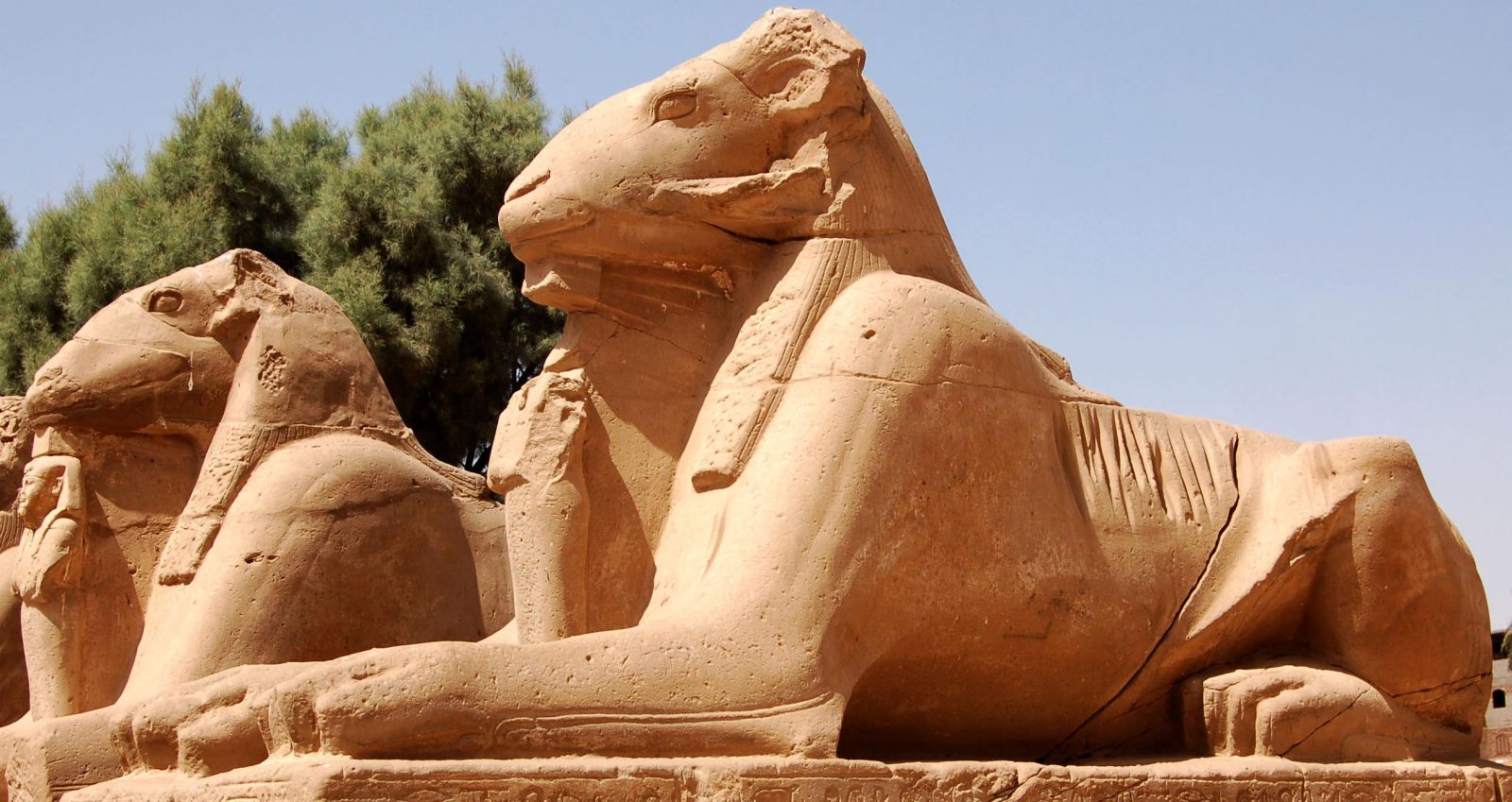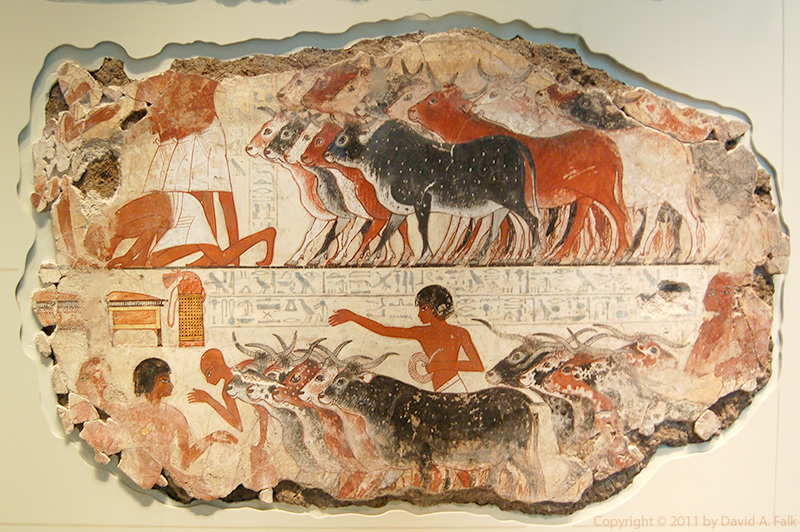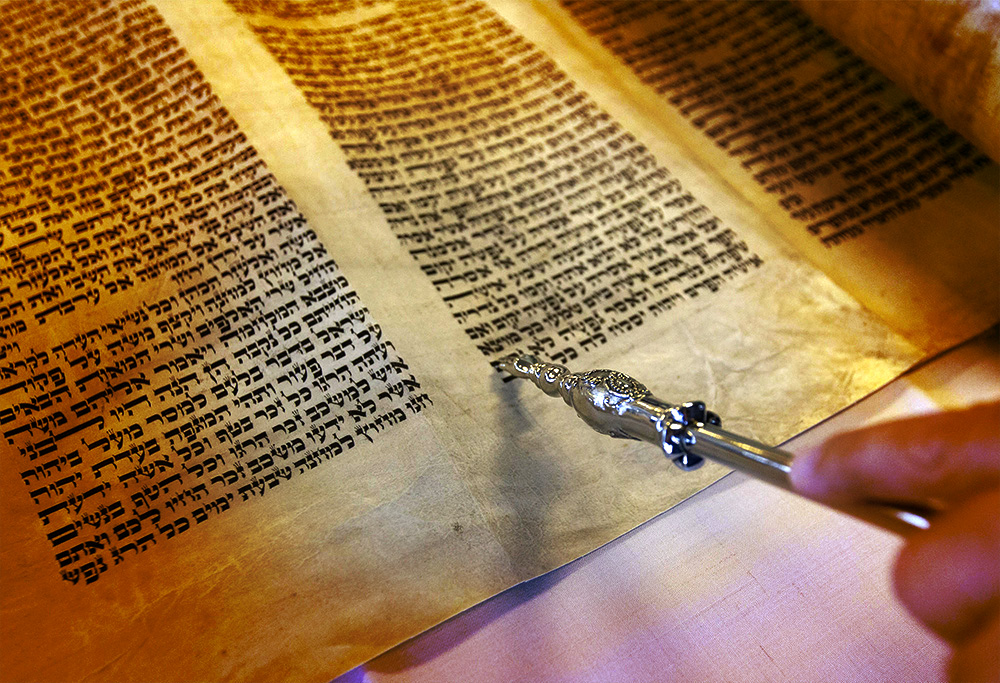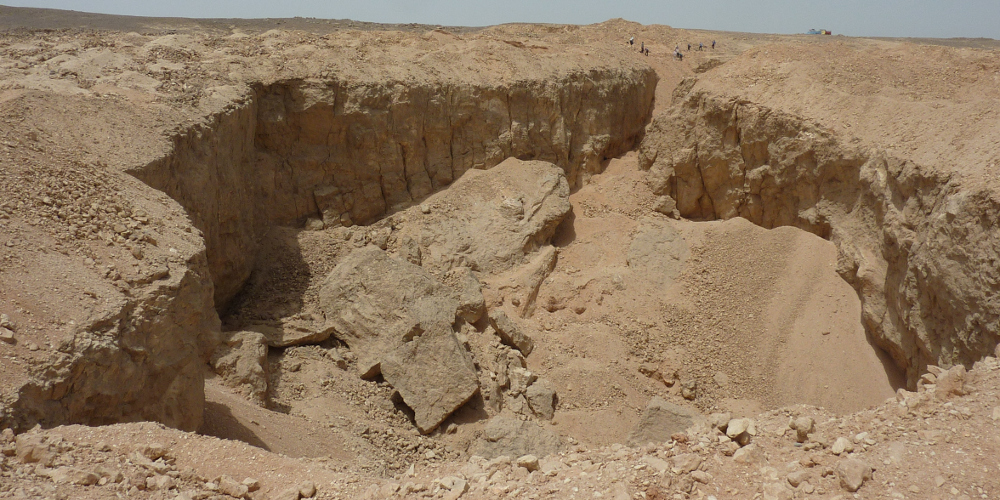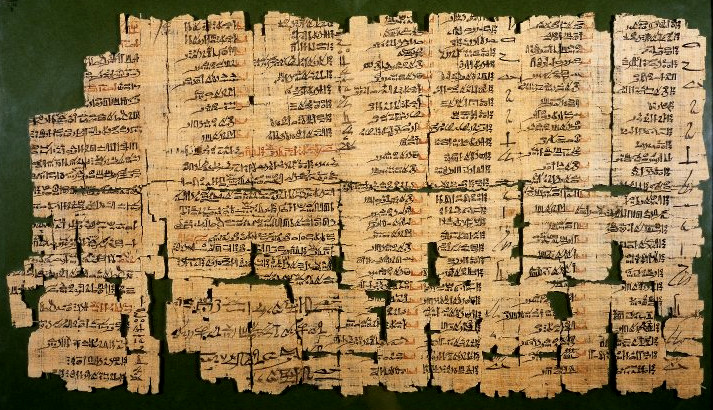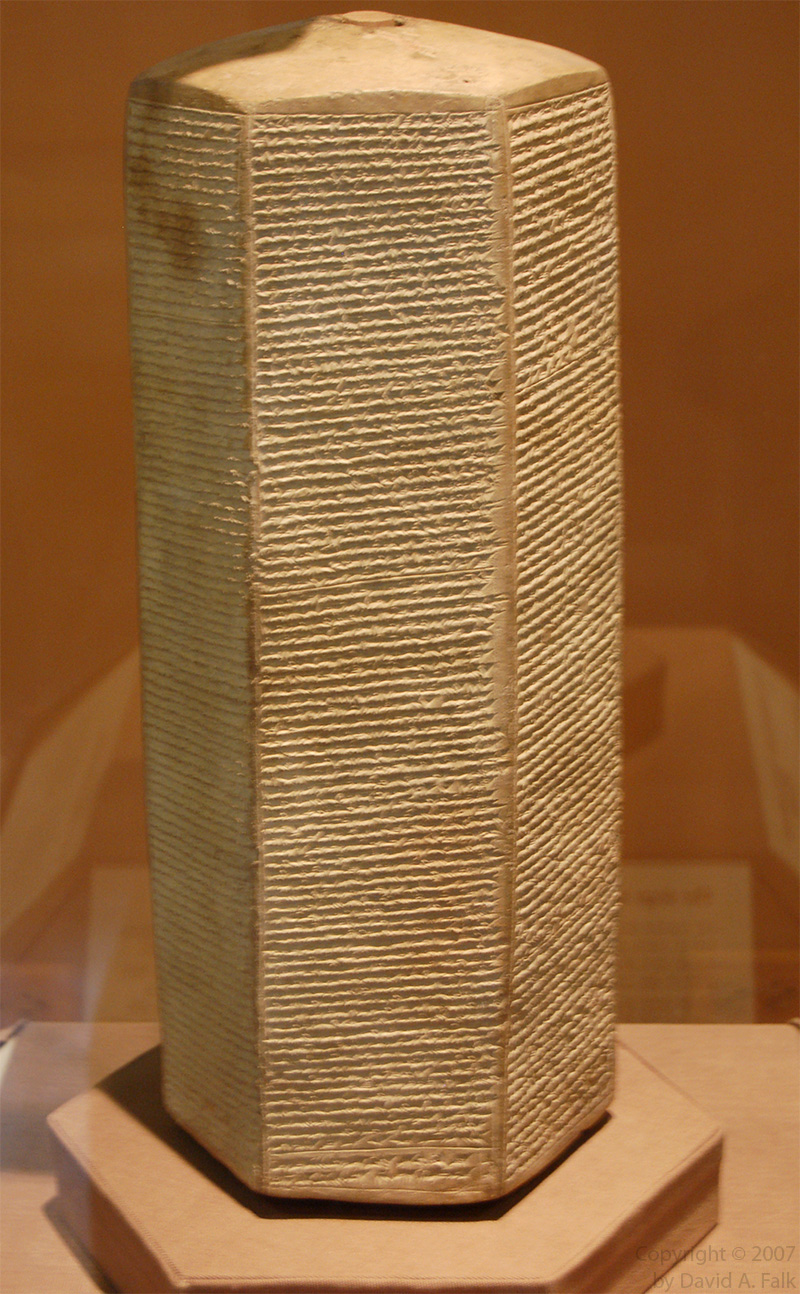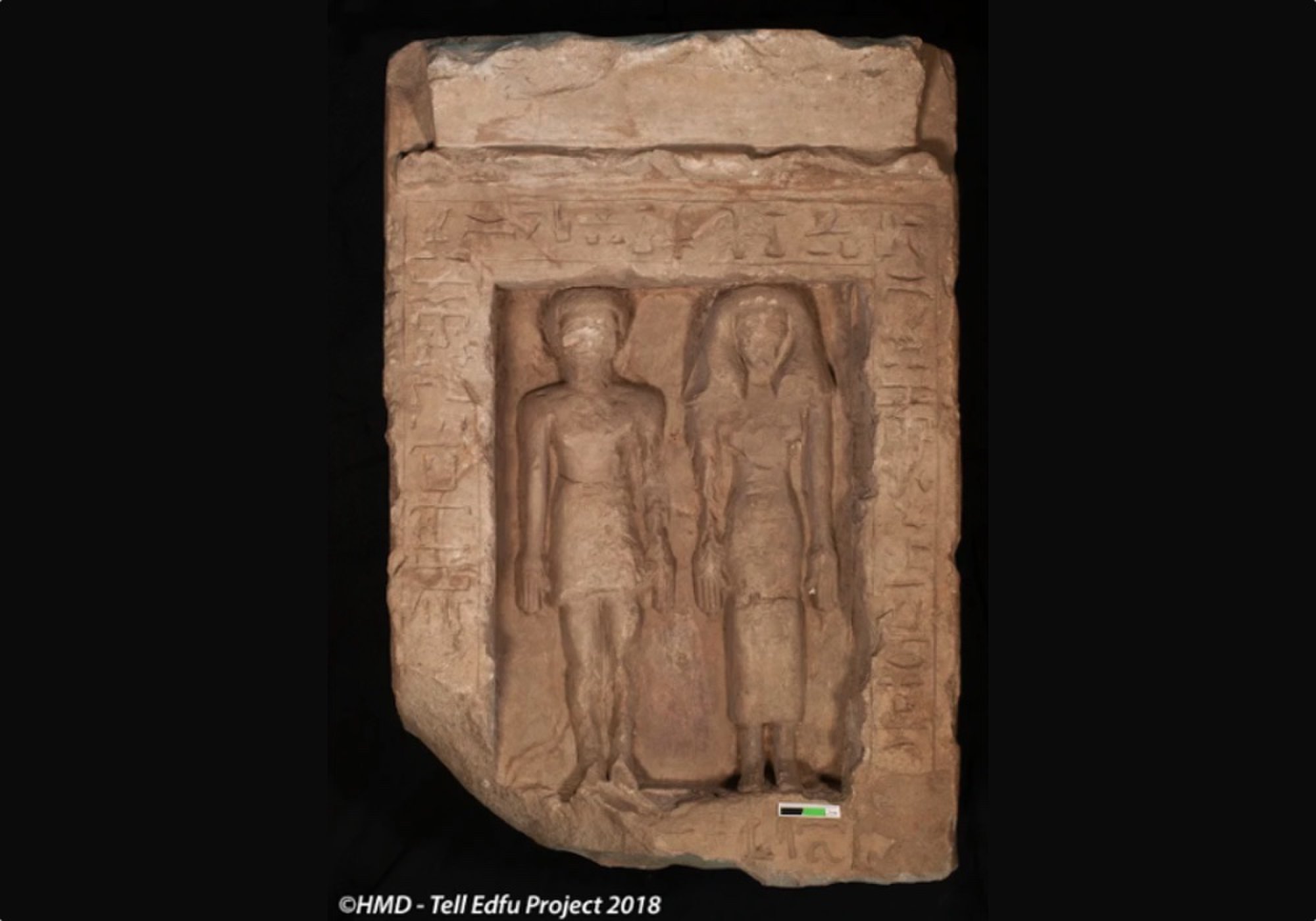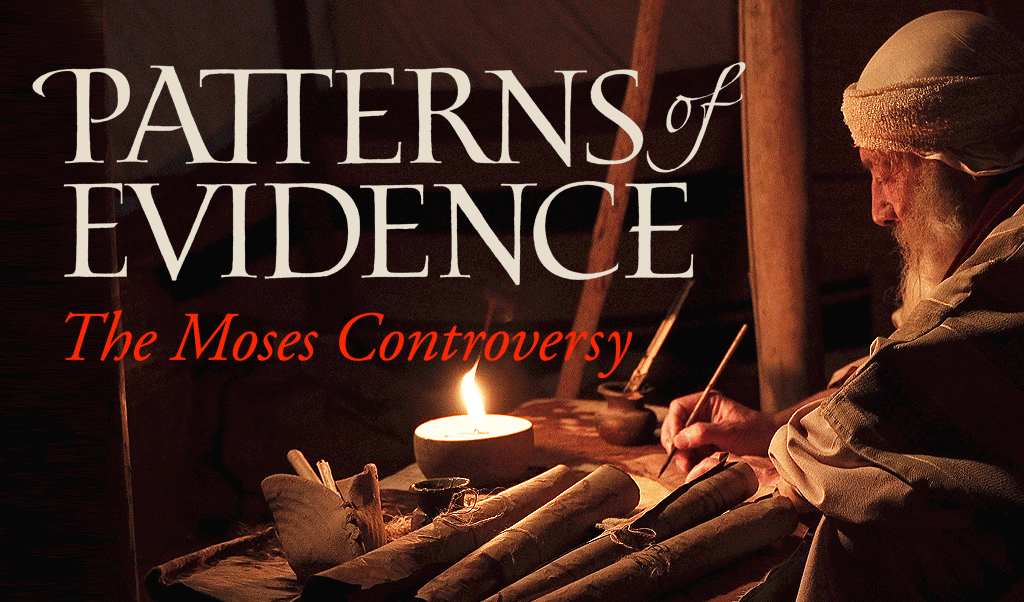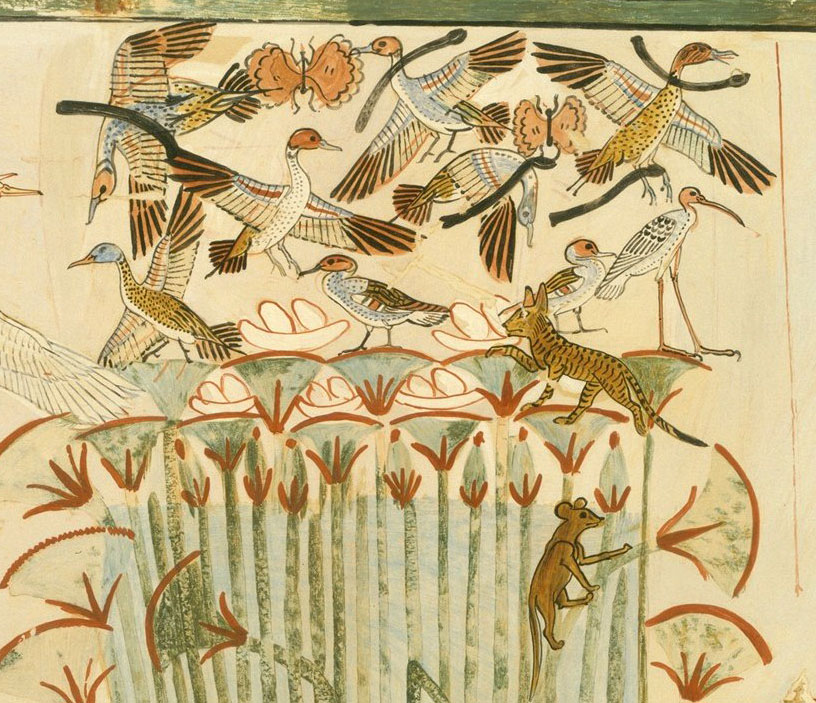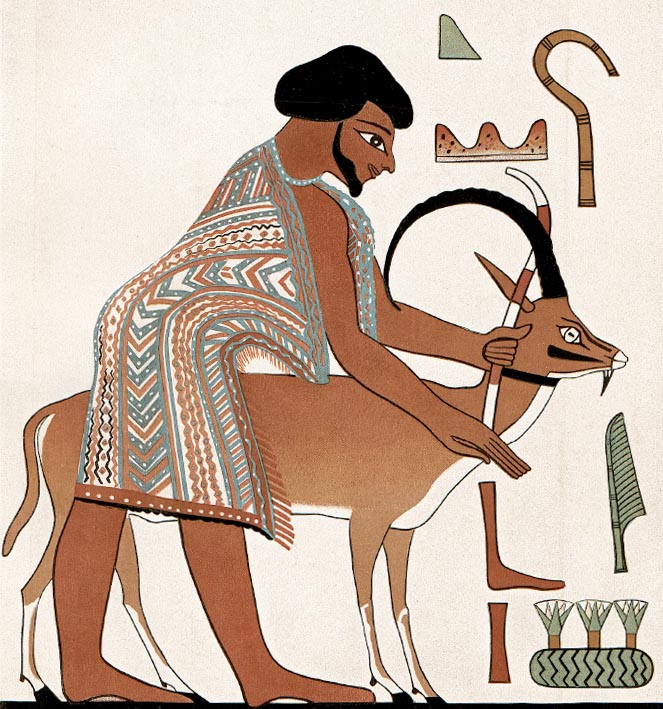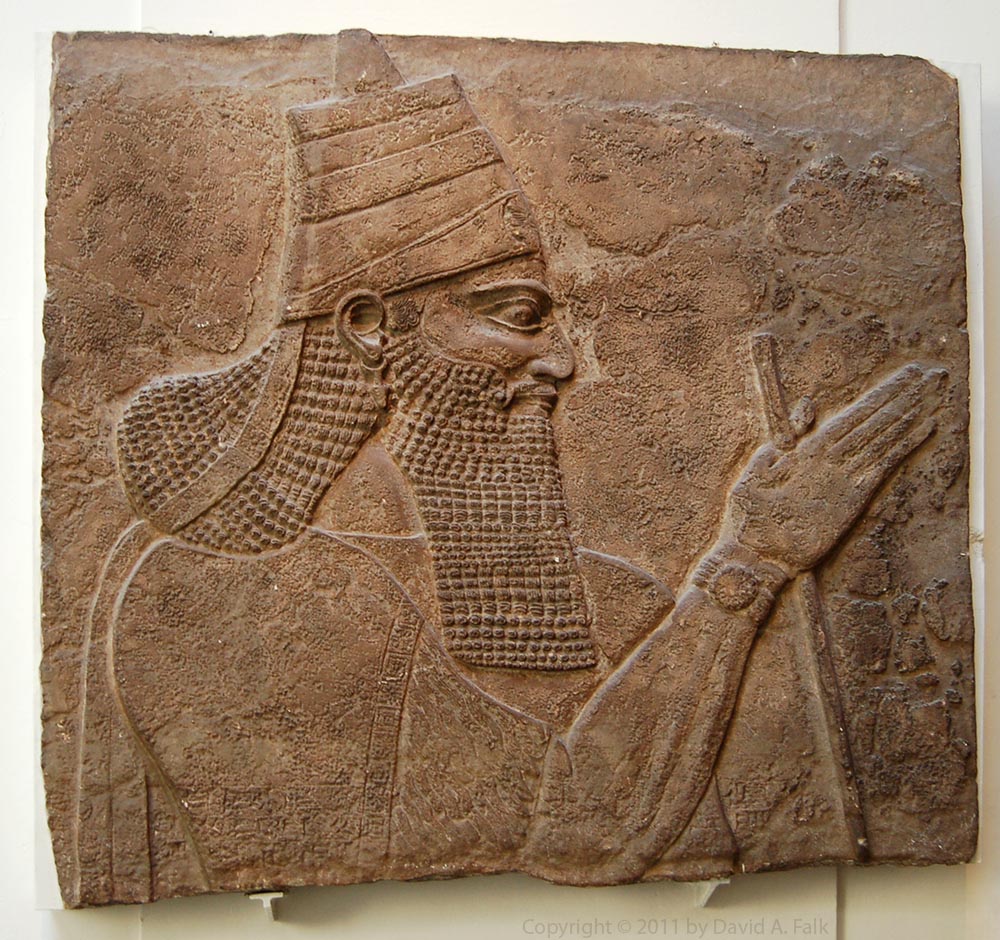Here we go again. Tim Mahoney has produced another Patterns of Evidence film. This time called The Moses Controversy.
Mahoney’s method of film-making is pretty straight forward. Gather together an ensemble cast of legitimate scholars, then lionize some fringe loon on the outskirts of the academic radar. Last time around it was David Rohl. This time it looks like Mahoney is going to lionize Douglas Petrovich. Petrovich’s thesis is that the Bronze Age Semitic inscriptions found in the Sinai contain Hebrew as well as the names of three persons in the Bible: Asenath, Ahisamach, and, of course, Moses.
In the months to come, I know that my inbox is going to fill up with inquiries about the quality of Petrovich’s research and this movie. Since I have not yet seen the movie (it’s not being released until March 2019), I can’t comment on it directly. I saw the last Patterns of Evidence movie, and it blithely ignored practically everything we know about Egyptian chronology. If past results are any indication, I don’t have much hope for this film.
Nevertheless, I can comment on the quality of Petrovich’s research. From the trailer, The Moses Controversy looks like it will be based largely upon the Petrovich’s book The World’s Oldest Alphabet. Last year, I reviewed that book for The Review of Biblical Literature. The Review of Biblical Literature is the leading publication for the review of Bible literature and scholarship. So, instead of commenting directly upon the quality of Petrovich’s scholarship, I am going to reprint my 2018 review below and let the reader decide the quality of Petrovich’s scholarship.
Review of The World’s Oldest Alphabet: Hebrew as the Language of the Proto-consonantal Script
Book by Douglas Petrovich. Reviewed by David A. Falk.
Published by Carta Jerusalem, 2017. Pp. xvi + 262.
Hardcover. $84.00. ISBN 9789652208842.
The premise of Douglas Petrovich’s The World’s Oldest Alphabet is that Hebrew is the language that underlies the early alphabetic inscriptions that were found in Egypt, which Petrovich calls proto-consonantal inscriptions (7). While not stated until the end of the book, by showing that Hebrew underlies these early inscriptions Petrovich seeks to prove that the exodus took place in 1446 BCE (195).
Chapter 1 (14 pages) sets out to discuss background matters to the early alphabetic inscriptions. In this section, Petrovich explains how he arrived at the view that “the world’s oldest alphabet, is Hebrew” (10). He starts with the assumption that the exodus occurred as a historical event in 1446 BCE and asserts that Joseph’s son Manasseh was Ḫebedeb, one of the “Hebrews” who wrote the Serâbîṭ el Khadîm inscriptions. He states that “the goal of the present work is to demonstrate that Hebrew is the language behind the original proto-consonantal script, and to translate 16 inscriptions from the Bronze Age that validate this claim as true” (11).
Chapter 2 (61 pages) contains translations of Middle Kingdom texts Sinai 115, 376, and 377, Wadi el-Hôl 1 and 2, and the Lahun Bilingual Ostracon. Chapter 3 (111 pages) has translations of New Kingdom texts Sinai 345a/b, 346a/b, 349, 351, 353, 357, 360, 361, 375a, and 378. This is a surprisingly small data set for a book of this nature. Further, when one considers the amount of cognate material available, perhaps more surprising is that no early alphabetic inscription from the Levant is referenced that might have supported the argument.
Petrovich works through each text with a “background to the inscription,” “paleographic decipherment,” “translation and orthography,” and “potential historical value.” His contribution is to review the epigraphy of previous scholars and supply his own readings. The bulk of the book involves the thought process of deciphering the alphabetic letters for each inscription. The decipherment of each letter is compared to how other epigraphers have read the letters, often disagreeing with more mainstream scholars.
Despite the small data set used, I found issues in the treatment of most of the texts. Some errors are relatively minor, such as the transcription of the Egyptian text for Sinai 377, which should be ʿnḫ mἰ rʿ ḏt instead of ʿnḫ(w) ḏt (30). Other issues are more serious or undermine the credibility of his thesis, such as his handling of the Hebrew. Several readings deviate from standard Hebrew. Finally, some readings appear forced, resort to eisegetic glosses, or rely upon extended explanations for support.
Given the highly subjective and visual nature of decipherment work, it is difficult to critique an epigraphic process without plunging into a highly detailed critique that focuses on only one example. Instead, I have selected a few of the sixteen readings to demonstrate some of these issues.
Sinai 376: “The house of the vineyard of Asenath and its innermost room were engraved. They have come to life” (65). Petrovich says that this “almost certainly was a posthumous reference to Joseph’s wife” (72) without broaching the possibility that this Asenath may not be the same person found in the Bible. He explains that “the house of the vineyard of Asenath figuratively would be brought to life with these engravings” (71), yet he forgets to discuss the inconsistency between his reading and the archaeological context. Egyptian houses were made of mudbrick and decorated by painting, not engraving.
Sinai 346b: “because of the favor of the abundance of the son’s sheep” (96), a reading that proposes perhaps the longest chain of nonconstruct genitives discovered in so-called Hebrew. This grammatical construction would be highly peculiar in ancient Hebrew.
Sinai 357: “A curse of 100-fold has passed through our people. A swooping has befallen us” (145). Petrovich explains “a swooping” as follows: “Just as an eagle swoops down on its prey at enormous velocity … the Hebrews fell victim to an overwhelming force that attacked them without any warning” (152). This explanation does not clarify what is a strange word choice and seems more like ad hoc reasoning.
Deviations from standard Hebrew present an obstacle for a thesis trying to prove Hebrew as the underlying language of these texts. It would have helped the reader if Petrovich had explained—or at least recognized—these idiosyncratic features of early Hebrew and relate them to other known Semitic examples.
Furthermore, the epigraphy is curious. With Sinai 115, Petrovich muddles the Egyptian p with the early orthography of the letter bet to read ἰbr (19). He implies that this orthography equals ʿibrî, “Hebrew” (23). While this might seem esoteric, this epigraphic argument is one of the central pillars of the case presented by this book (191). However, this reading is strange given that the Egyptian ἰ is not equivalent to the Hebrew ayin.
Petrovich’s argument that the channel-cut style of the glyph means that this letter cannot be an Egyptian p (19) is special pleading. Numerous examples of a channel-cut Egyptian p exist, including from within the formal Egyptian text in the upper portion of Sinai 115 itself. Besides, context alone makes this reading implausible because the so-called Semitic letter occurs inside a text of otherwise uncontested Egyptian letters, making the Egyptian p more plausible.
Petrovich further claims that the Egyptian gb-ἰtw in Sinai 115 really means “Bethel.” He justifies this claim with a “historical” explanation instead of a linguistic explanation. Since God wrestled Jacob “on the ground” (27), Ḫebedeb would have associated the God of Jacob with the Egyptian earth-god Geb. Therefore, “‘the house of (the) God (of / on the earth)’ (=Bethel)” (28).
For Sinai 357, Petrovich reads the seventh horizontal letter as an ox-head aleph. Petrovich states that “the antlers consist more of jagged lines than of a continuous curve” (144) but has not seemed to grasp that oxen have horns, not antlers. This error is made consistently through the book (32, 49, 67, 82, 102, 107, 109, 110, 128, 132, 134, 146, 148, 155, 177, 183, 190). He defers to previous epigraphers to justify this reading even though the Sinai 357 letter is actually two letters, nun and kaph, written close together.
Sinai 361 is read “Our bound servitude had lingered. Moses then provoked astonishment. It is a year of astonishment because of the Lady” (160). Petrovich acknowledges that he has to depart from normal Hebrew syntax to read “Moses” in this text (165). By ignoring normal Hebrew syntax to find the name Moses, this strongly suggests confirmation bias. While the reading of the first letter is better than most readings, with Petrovich correctly discerning the vertical stroke on the right side of the character, he reads it as a bet instead of a yod when polynomial texture mapping reveals that the bottom horizontal line extends beyond the vertical line. This would make the main verb יחש , “empty,” and preclude the identification of Moses in this text.
Sinai 375a (HSM 1935.4.7) is read as a dual Egyptian/Hebrew inscription, “The overseer of minerals, Ahisamach. The one having been elevated is weary to forget” (175). Besides a translation that makes little sense, the reading infers an Egyptian y that the epigraphy cannot support after a Hebrew khet in “Ahisamach” and ignores a string of characters (ayin, lamed, zayin) that follow immediately after the supposed yod, traces of which have been noted by other epigraphers[1] and that can be easily seen under strobe examination of the stela.
The translation of the Egyptian portion of Sinai 375a is doubtful. Petrovich reads Gardiner Sign M42[2] as an abbreviation for ἰmyw, “minerals,” citing Vygus’s online self-published word list as his source without reference to the exact entry or page number (174). However, no word ἰmyw meaning “minerals” is in Vygus[3] or any other standard Egyptian dictionary.[4] Petrovich provides no evidence that Sign M42 was ever used as an abbreviation for “minerals” (179).
Although the epigraphy is a problem, Petrovich’s dating is more so as it relies on circular reasoning by assuming the conclusions he is trying to prove. He starts with the premise that the name Ahisamach appears only in the book of Exodus (181). Then he begs the question by leaping from “if the Ahisamach of Sinai 375a is the same man as the lone biblical personage of that name” (182) to “the significance of Sinai 375a to the present study cannot be underestimated … due to its identification of an obscure biblical character [Ahisamach] of this latter date in an historical context” (182).
Not content to stop there, he assumes an early exodus view, dates the stela according to that assumption, then claims the date of the stela as proof for an early exodus. According to Petrovich, the exodus dates to 1446 BCE, so Sinai 375a must date to about thirty years earlier to circa 1480 BCE (182). Then he concludes that the dating of the early alphabetic inscriptions “is the refutation of errant views of Biblical chronology, such as the late exodus view” (195).
Chapter 4 (15 pages) offer “concluding thoughts,” where Petrovich states that the early alphabetic inscriptions “can be equated with Hebrew confidently” for three reasons: (1) the presence of the noun “Hebrews” in Sinai 115; (2) each early alphabetic letter has a Middle Egyptian “hieroglyphic exemplar”;[5] and (3) the presence of “three biblical figures who have names used of only one person in the Bible” (191). However, these reasons seem unrelated to the central thesis that Hebrew is the language that underlies the early alphabetic inscriptions, and no attempt is made to deduce a conclusion from linguistic arguments. Instead of discussing the overarching nature of the inscriptions and the Hebrew within them, Petrovich shifts his argument to using the supposed presence of Hebrew as proof that the exodus took place in 1446 BCE and as support for the historical events that took place in the books of Exodus and Genesis (186–87, 195–99).
Even though much of the final chapter is devoted to the early dating of the exodus, a sizeable portion is also devoted to irrelevant issues such as the gender of the golden calf (199–200), why only those with his specialized education have “the ability to contribute to the topic in any truly significant manner” (188), and why his methodology is beyond questioning: “even if someone were to receive the appropriate training … archaeologists and ANE scholars would then turn around and accuse that researcher of applying improper methodology” (188). However, this defensive posture draws attention to Petrovich’s methodology.
Petrovich used publication photos magnified to 400 percent in Microsoft PowerPoint (xii, 86), a method no modern epigrapher would recognize. Petrovich did not use specialized (multiple light or multispectral) photography and strobe lighting. Advanced imaging software such as DStretch or Photoshop was not used. The best recent photographs and polynomial texture maps were not used. Petrovich did not examine most of these inscriptions in person, nor did he use the most recent epigraphic tools. This has led to epigraphy that is inferior to Hamilton’s readings of a decade ago.
In addition, Petrovich cites himself thirty-nine times, which shows inadequate interaction with prior scholarship. Some citations refer to ideas that other authors said long ago; for example, he states that “the exodus pharaoh (Exod 5:1) is Amenhotep II (Petrovich 2006)” (197), when that same idea was claimed by James Orr and J. W. Jack.[6] If Petrovich
had cited Orr and Jack’s identification of Amenhotep II in the 2006 article, then these citations may have only been weak scholarship; however, neither this book nor the 2006 article cite Orr or Jack.
Some of the self-citations conceal an original source (28, 74, 152, 195); for example, compare “which totaled 101,128 (Petrovich 2006: 102, 104–106)” (28) with “The figures given totaled 101,128,” taken from ANET. In this case Petrovich cited original sources in his article then cited his own article with no reference to the original sources.[7] Source materials with easily available citations were handled in a sloppy manner.
Eighteen self-citations are to an unpublished, unfinished work. This is regrettable. Given the bold claims of the book, having so many citations dependent upon a work that may not come to fruition is deeply unsatisfying. Some of these come at critical junctures in the book when evidence would have been really useful. For example, Petrovich states that “Asenath was the wife of Joseph and the mother of Ephraim and Manassah, the two sons who departed from their father’s house when their grandfather (Jacob) informed Joseph that he was confiscating them and taking them to live among their uncles as their equals (Gen 48:5, 15–20), which can be demonstrated archaeologically (Petrovich: in prep)” (70). If it can be demonstrated archaeologically, surely an adequate citation must exist. Would not that evidence be germane to the central argument?
Ultimately, Petrovich never supplies proof that his translations are from Hebrew as opposed to any other Semitic language. Nor does he compare the early alphabetic inscriptions with earlier Semitic languages such as Akkadian. This is baffling, given that Eugene Merrill, who wrote the preface, lauded him for “His acclaimed expertise in … comparative linguistics and literature” (vi).
Even though pastors and teachers may consider purchasing the book, these audiences might find the content unsuitable. The writing style employs dense prose and makes comparisons only specialists with experience in epigraphy might comprehend. The level of detail could overwhelm the nonspecialist while the lack of evidence would likely disappoint those expecting a quality academic work. All things considered, the best thing about this book is that the publisher, Carta Jerusalem, brought its experience as a mapmaker to create a volume with beautiful typography and flawlessly printed graphics.
After carefully reading The World’s Oldest Alphabet, I cannot recommend this book. This work is deeply flawed, with many examples of confirmation bias, logical fallacy, and failure to engage the existing scholarship. The translations are based upon an inadequate methodology, a doubtful epigraphy, and a poor understanding of ancient languages. The evidence that the book presents is insufficient to warrant the hyperbolic claims, and the tone of the writing does not seek to convince as much as forcefully assert its conclusions. The problems with the book are plentiful and easy to discover, and the work does not advance existing scholarship.
Footnotes.
1. E.g., Gordon J. Hamilton, The Origins of the West Semitic Alphabet in Egyptian Scripts (Washington, DC: Catholic Biblical Association of America, 2006), 374–75.
2. Gardiner Sign M42 was often confused with Gardiner Sign Z11 in ancient Egyptian orthography, with Z11 eventually replacing M42; however, the two signs are not exact phonetic equivalents. Petrovich probably means Z11 (ἰm, wn) instead of M42 (wn). The inability to keep graphemes and phonemes straight is, unfortunately, systemic in the book.
3. Mark Vygus, “Middle Egyptian Dictionary,” 1097–1099 and 2258–2267. http://www.pyramidtextsonline.com/MarkVygusDictionary.pdf.
4. E.g., Rainer Hannig, Großes Handwörterbuch Ägyptisch–Deutsch (2800–950 v. Chr.) (Mainz: Zabern, 2009), 77. The closest phrase that means “minerals” is ἰmyw tꜣ, “that which is from the earth,” but no reference is made to this expression in the book.
5. The idea that the early alphabetic letters are derived from Middle Egyptian hieroglyphic characters is not a claim new to this book. However, this book does not address this subject until appendix 1, where the treatment is somewhat idiosyncratic compared to other epigraphers who have worked on the topic, such as Goldwasser and Hamilton.
6. James Orr, The Problem of the Old Testament (New York: Charles Scribner’s Sons, 1906), 422–23; J. W. Jack, The Date of the Exodus in Light of External Evidence (Edinburgh: T&T Clark, 1925), 117.
7. “The Asiatic Campaigning of Amen-hotep II,” translated by John A. Wilson (ANET, 247 n. 48), which is quoted in Douglas Petrovich, “Amenhotep II and the Historicity of the Exodus-Pharaoh,” TMSJ 17 (2006): 102 n. 114.
